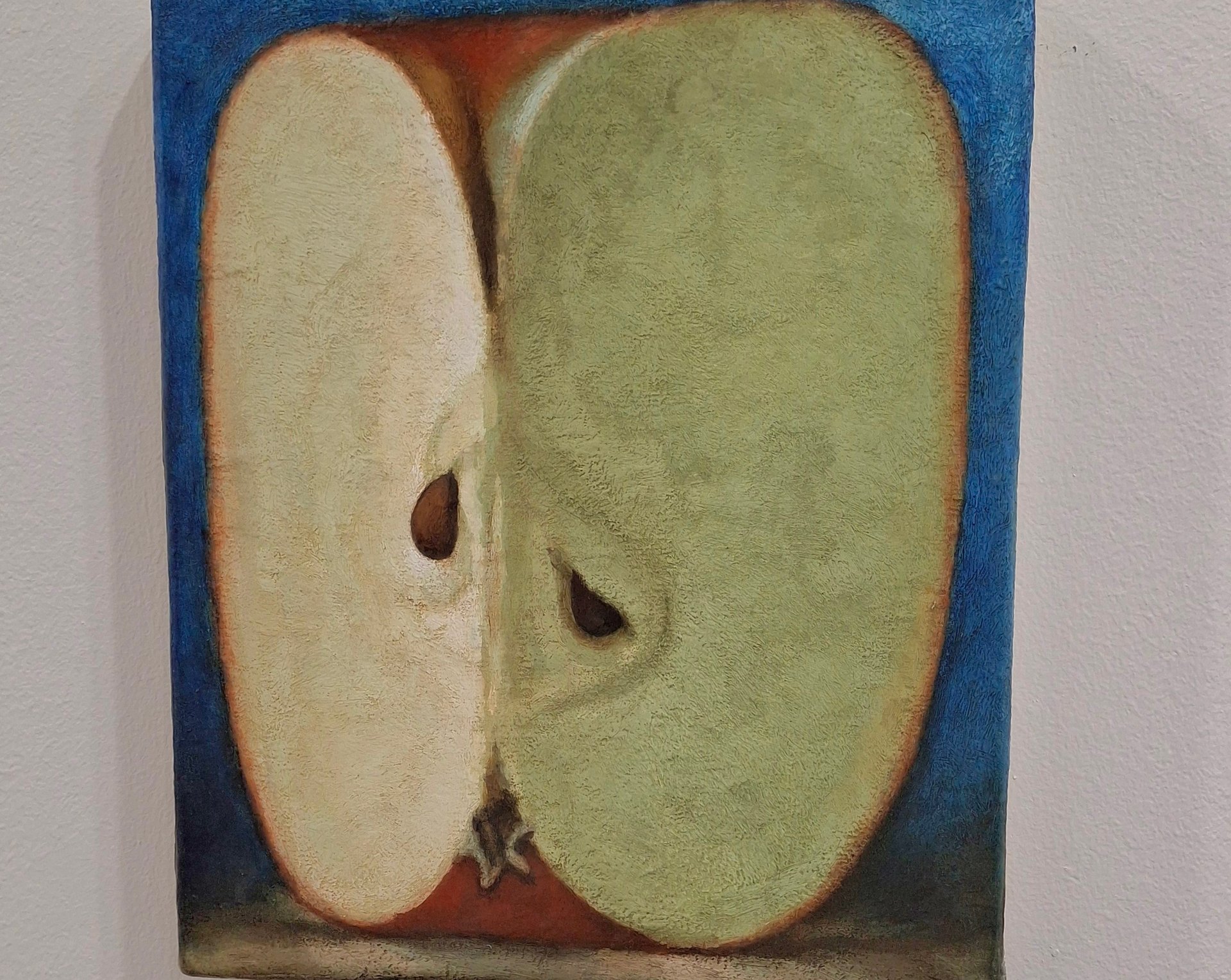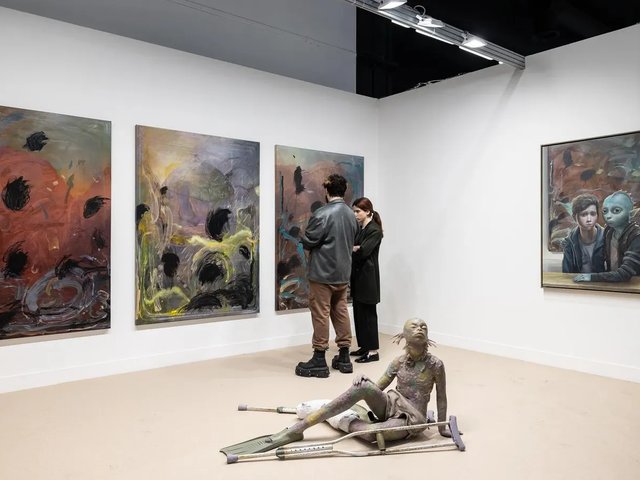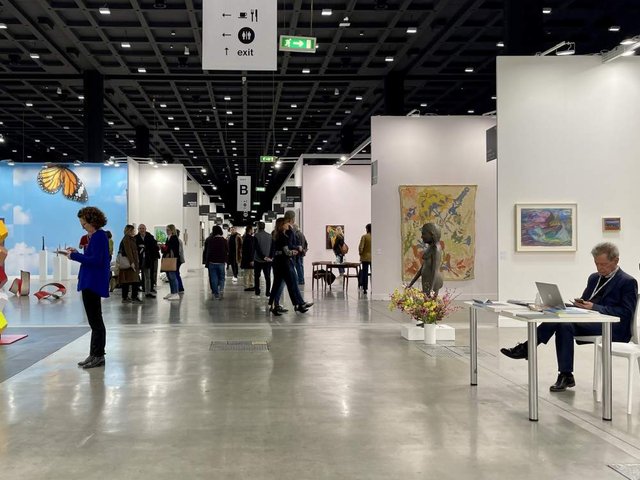Tax, not art, was the hottest topic at the 5 April VIP preview of the Milan art fair Miart (until 6 April). Held in the vast Allianz MiCo conference centre, the fair, now in its 29th edition, boasted 179 exhibitors from 31 countries.
A number of these dealers were prominently displaying on their stands a long “Letter from artists to the government” addressed to Italian prime minister Giorgia Meloni and signed by 600 artists, including established figures like Maurizio Cattelan. The letter expressed “serious concern” about the 22% tax on art sold in the country, which it said had created an “alarming situation” for artists and was turning the country into a "cultural desert".
The trade had hoped that the government would change its mind on the issue, but in February this year it had decided to maintain the existing rate. “This is crazy—if you drive 300 kilometres to France and sell art there, the rate is only 5.5%,” said fair director Nicola Ricciardi,.“So 16.5% less! It is totally anticompetitive!”
In fact, it is cheaper for a foreign gallery—which make up around 60% of exhibitors at Miart— to sell into Italy, as they will only pay 10% VAT.
Gallery associations across the board, from Old Masters to contemporary, have been lobbying for change for a year now, but Ricciardi is holding out hope. “For the first time I heard the Italian minister of culture said they had to do something. But it will take time," he said at the opening of the fair.
While the VAT rate is a real problem for the art trade in Italy, the country is also benefitting from the arrival of wealthy individuals from the UK who have exited the UK because of tax changes. “I know many who have settled here,” said returning dealer Sadie Coles, who had skipped Miart for a number of years because of its proximity to Art Basel Hong Kong. She was pleased to be back, noting how the fair was “looking at contemporary art through the prism of post-war Italian art”. Coles also commented on what an “intelligent and educated audience” it attracts. Other newcomers included Victoria Miro and Meyer Riegger, who bolstered the quality of the fair.

A painting by Edward Kay on the stand of Roland Ross
Miart is not an expensive fair for dealers. In the Emergent section a booth costs around €5,000, and in addition the fair covers hotel costs for a gallery’s first outing. This encouraged seven British galleries to sign up, among them Brunette Coleman and Rose Easton. Ricciardi was pleased to note that three in 2024 were “promoted” to the main section this year. Margate gallery Roland Ross—which scooped the prize for the best gallery in the section last year— was back with paintings of apple halves by Edward Kay, and sold five at £3,000 each. The shared booth of London’s Arcadia Missa and Tokyo’s Misako & Rosen sold out dark paintings by Reina Sugihara at prices from €5,000 to €15,000. And Capetown gallery Whatiftheworld had beautiful cut Perspex works by Lyndi Sales at €10,000 each.
In the main section, where booths cost around €30,000, there was a broad spread of art on offer, mainly contemporary but also a good showing of Arte Povera and post-war Italian art: Fontana and De Chirico featured on a number of stands. A red three-slash Fontana sculpture on the Tornabuoni stand was priced at €1.3m; while this had not sold on the first day, the gallery did place a work by Emilio Isgrò, Mare di Sicilia (2016), a map of Sicily with crossed-out place names, for €100,000 and was “in negotiation” for a De Chirico at €800,000.
On the whole sales tended to be muted, hardly a surprise considering that Donald Trump had announced his "Liberation Day" tariffs the day before. Some dealers at the fair were anxiously trying to establish if art would be exempted, scrolling through product categories on the US government website.
“If art isn’t exempted, it could spell the end of art fairs,” said one dealer grimly. Fortunately, for Miart and indeed fairs worldwide, it seems art—but not antiques and collectables—will not be subject to tariffs.





